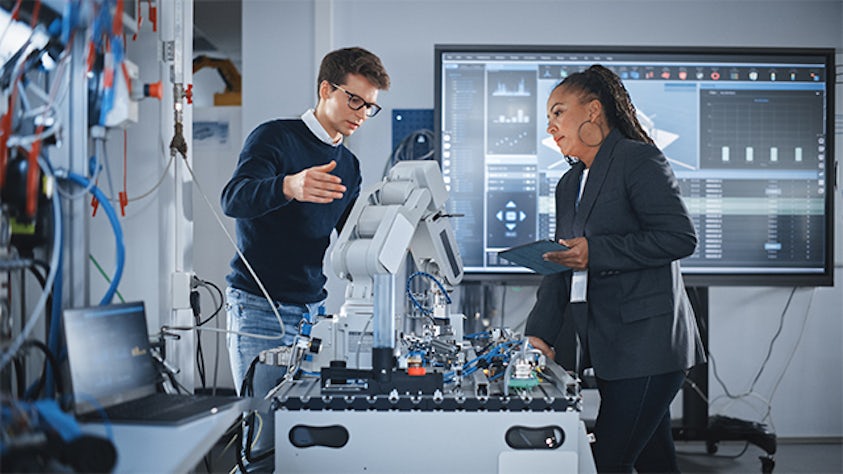Integrating Manufacturing Quality
Workflows and business processes built on industry best practices should provide the basis for manufacturing quality at every step of the manufacturing process. These best practices error-proof manufacturing processes to ensure that each step is executed correctly, with complete, fully traceable data.
Assuring Conformance
The best path to quality is to prevent issues and mistakes from happening. To meet conformance requirements, manufacturing quality systems should automatically enforce the use of only approved processes, materials, equipment, tools and operators – before any step can be performed. These systems also ensure that all process and product tests are executed and that the results meet specifications. Manufacturing quality systems automatically create the as-manufactured records that detail the processes, material, equipment, tools, operators and test results with time stamps and electronic signatures.
In case any of a deviation in the results, the manufacturing quality system should react to quality events Further, these systems should enforce structured failure analysis, root cause identification, quarantine, and final disposition (release, rework, scrap, etc.) to ensure manufacturing quality across the enterprise. From the time a deviation occurs until disposition, manufacturing non-conformance reports should be generated to provide complete electronic traceability and links to the root causes of manufacturing quality issues. These reports should be created immediately, when information about product quality is most readily available, providing visibility and control of the affected material and preventing products with open issues from being processed beyond a designated step, issued to or combined with other products, or shipped to finished stock or the customer.
Corrective Action/Preventative Action (CAPA)
Management of corrective and preventive actions is critical to manufacturing quality. Accordingly, manufacturers are moving to incorporate closed-loop corrective and preventive action tracking systems that enable the identification, addressing, and quick resolution of manufacturing quality issues through integration with the invaluable data in manufacturing quality systems. systems together facilitate the investigation of manufacturing quality issues such as nonconformance, customer complaints, incidents, or discrepancies. Real-time notification and preventive and corrective action workflows enable manufacturers to efficiently communicate with all affected parties to streamline collaborative activities and resolve issues quickly and effectively. Reporting capabilities provide real-time visibility into manufacturing trends and quality management issues, enabling manufacturers to take fast action to resolve problems and ensure total quality control over all manufacturing processes.
Increasingly, manufacturing quality is seen as a strategic imperative for the manufacturing enterprise. The customer, whose expectations of quality have reached unprecedented levels, is the ultimate arbiter of quality. Value, satisfaction, and preference are influenced by many factors throughout a customer’s purchase, ownership, and service experiences with a product. As such, manufacturing quality must be sensitive to existing and evolving customer and market requirements, and must account for the factors that drive customer satisfaction. It also must account for technological development and how it can both impact and serve the end users of manufactured products, as well as the manufacturer itself.


